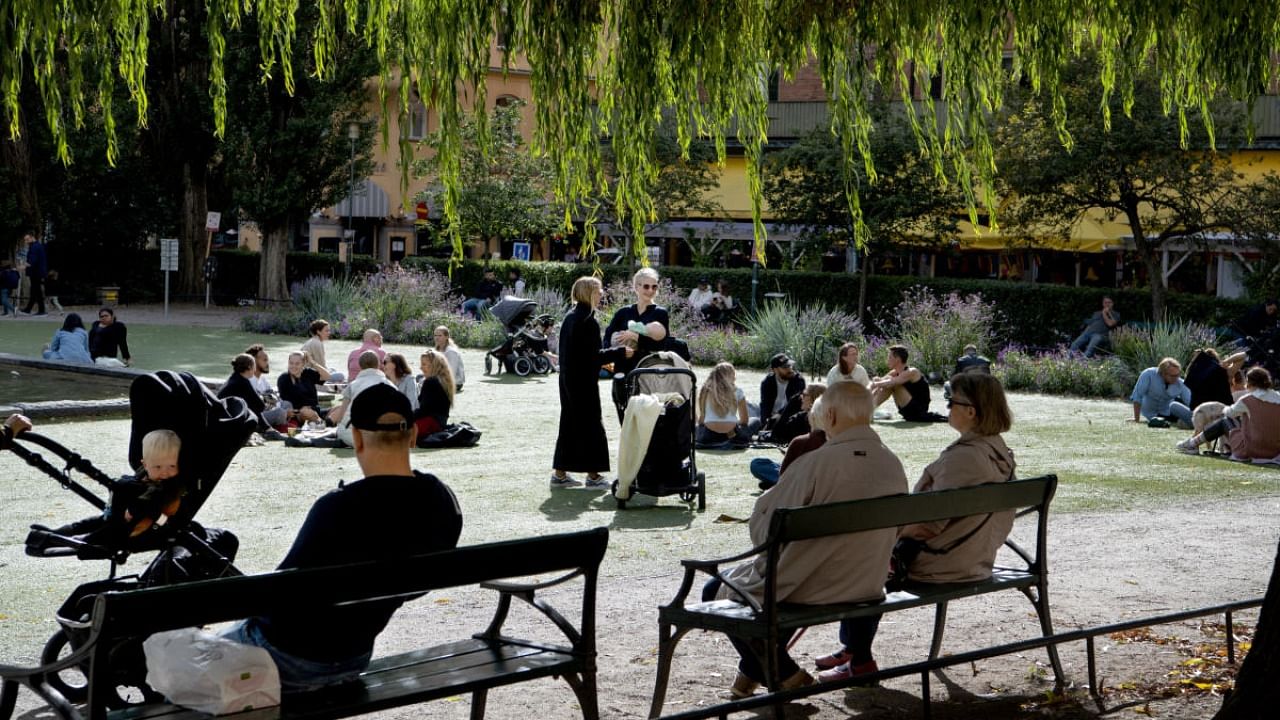
The scene at Norrsken House Stockholm, a coworking space, oozed with radical normalcy: Young, turtleneck-wearing hipsters schmoozed in the coffee corner. Others chatted freely, at times quite near one another, in cozy conference rooms. Face masks were nowhere to be seen.
It seemed like January, before the spread of the coronavirus in Europe, but it was actually last week, as many European nations were tightening restrictions amid a surge of new cases. In Sweden, new infections, if tipping upward slightly, still remained surprisingly low.
“I have potentially hundreds of tiny interactions when working here,” said Thom Feeney, a Briton who manages the coworking space. “Our work lives should not be reduced to just the screen in front of us. Ultimately, we are social animals.”
Normalcy has never been more contentious than now in Sweden. Almost alone in the Western world, the Swedes refused to impose a coronavirus lockdown in the spring, as the country’s leading health officials argued that limited restrictions were sufficient and would better protect against economic collapse.
It was an approach that transformed Sweden into an unlikely ideological lightning rod. Many scientists blamed it for a spike in deaths, even as many libertarians critical of lockdowns portrayed Sweden as a model. During a recent Senate hearing in Washington, Dr. Anthony Fauci, the leading U.S. infectious disease specialist, and Sen. Rand Paul, R-Ky., angrily clashed over Sweden.
For their part, the Swedes admit to making some mistakes, particularly in nursing homes, where the death toll was staggering. Indeed, comparative analyses show that Sweden’s death rate at the height of the pandemic in the spring far surpassed the rates in neighboring countries and was more protracted. (Others point out that Sweden’s overall death rate is comparable to that of the United States.)
Now, though, the question is whether the country’s current low caseload, compared with sharp increases elsewhere, shows that it has found a sustainable balance, something that all Western countries are seeking eight months into the pandemic — or whether the recent numbers are just a temporary aberration.
“It looks positive,” said Anders Tegnell, Sweden’s state epidemiologist, who gained global fame and notoriety for having kept Sweden out of lockdown in March.
With a population of 10.1 million, Sweden averaged a little more than 200 new cases a day for several weeks, although in recent days that number has jumped to about 380. The per capita rate is far lower than nearby Denmark or the Netherlands (if higher than the negligible rates in Norway and Finland). Sweden is also doing far better, for the moment, than Spain, with 10,000 cases a day, and France, with 12,000.
Critics say Sweden does not test for the virus as thoroughly as many other nations — with 142,000 tests for the week ending Sept. 13. Britain, with about six times the population, tested only 587,000 people in the most recent week, far fewer per capita than Sweden. And Britain conducted far more tests than France, Germany or Spain in that period.
In early September, 1.2% of tests in Sweden were positive, compared with about 7% currently in Northwest England, Britain’s hardest-hit area.
In response to the recent outbreaks, many European countries are imposing new restrictions. But political leaders, anxious to avoid unpopular and economically disastrous lockdowns, are relying mostly on social-distancing measures, while trying to preserve a degree of normalcy, with schools, shops, restaurants and even bars open.
In essence, some experts say, they are quietly adopting the Swedish approach.
“Today, all of the European countries are more or less following the Swedish model, combined with the testing, tracing and quarantine procedures the Germans have introduced, but none will admit it,” said Antoine Flahault, director of the Institute of Global Health, in Geneva. “Instead, they made a caricature out of the Swedish strategy. Almost everyone has called it inhumane and a failure.”
Back in the spring, when other nations were clamping down, Sweden was often vilified for having gone its own way. Its borders stayed open, as did bars, restaurants and schools. Hairdressers, yoga studios, gyms and even some cinemas remained open, as did public transportation and parks.
Gatherings of more than 50 people were banned, museums closed and sporting events canceled. But that was the extent of the measures, with officials saying they would trust in the good sense of Swedes to keep their distance and wash their hands.
Flahault lauded Sweden’s government for that part of its approach.
“The Swedes went into self-lockdown,” he said. “They trusted in their people to self-apply social distancing measures without punishing them.”
But Flahault also warned about what he called a major flaw in the Swedish approach.
“They continue not to wear masks,” he said. “That can be a big drawback in the Swedish strategy if masks prove effective and key in fighting the pandemic.”
Sweden might also just be enjoying a lull between peaks of infection. The public face of the country’s coronavirus policies, Tegnell, agrees, saying the numbers can always go up, as they just have. That said, however, “Sweden has gone from being one of the countries in Europe with the most spread to one that has some of the fewest cases in Europe,” he said in a recent interview.
Some experts believe that Sweden is now almost fully in control of the virus.
“There are indications that the Swedes have gained an element of immunity to the disease, which, together with everything else they are doing to prevent the infection from spreading, is enough to keep the disease down,” Kim Sneppen, professor of biocomplexity at the Niels Bohr Institute in Copenhagen, said in an interview.
He stressed that the country could have avoided the high death toll in the beginning but said that Sweden had regained control from mid-April, when deaths declined steadily.
While the Swedes are far from having achieved herd immunity, he said, “we can conclude that their social distancing rules have proven essential.”